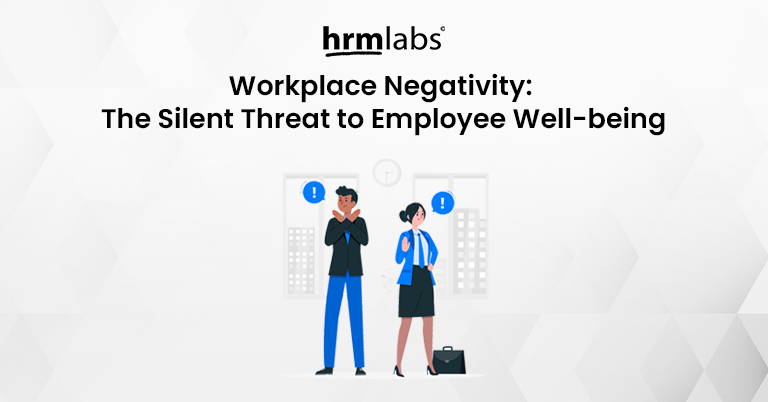If you are a Singaporean worker, you may have experienced or witnessed negativity in the workplace. Negativity can take many forms, such as gossip, criticism, blame, bullying, harassment, or discrimination. These behaviours can have a significant impact on employee morale, productivity, and overall job satisfaction. It is important to recognize the signs of negativity in the workplace and take steps to address them.
In this blog post, we will discuss what workplace negativity is, why it is bad for your business, how to recognize it, and how to address it to create a positive workplace.
What is negativity in the workplace?
Negativity in the workplace is a state of mind or attitude that is pessimistic, cynical, or hostile towards work or others. It can manifest in various ways, such as:
- Complaining, criticizing, or blaming others for everything
- Gossiping, spreading rumors, or badmouthing others
- Resisting change, rejecting feedback, or refusing to cooperate
- Underperforming, procrastinating, or avoiding responsibilities
- Showing disrespect, rudeness, or aggression towards others
- Expressing dissatisfaction, frustration, or anger frequently
- Feeling bored, unmotivated, or unhappy at work
Why is negativity bad for your business?
Negativity in the workplace can have serious consequences for your business, such as:
- Lower productivity and performance: Negative employees tend to be less efficient, effective, and creative. They may also make more mistakes, miss deadlines, or waste resources.
- Higher turnover and absenteeism: Negative employees tend to be less loyal, engaged, and satisfied with their work. They may also experience more stress, burnout, or health issues. This can lead to them quitting their jobs or taking more sick leaves.
- Poor customer service and reputation: Negative employees tend to be less friendly, helpful, and professional with customers. They may also damage your brand image and reputation by giving negative reviews or feedback.
- Lower morale and teamwork: Negative employees tend to be less cooperative, supportive, and respectful with their colleagues. They may also create conflicts, tensions, or distrust among team members.
- Higher costs and risks: Negative employees tend to increase your costs and risks by causing more errors, accidents, lawsuits, or complaints.
How to recognize and address negativity in the workplace?
Negativity in the workplace can be hard to detect and deal with. However, there are some signs and steps that you can use to identify and address it effectively:
- Frequent Complaints: If employees often voice grievances about their work or colleagues, it’s a sign that something may be amiss.
- High Turnover: A revolving door of employees leaving the company is a clear red flag.
- Decline in Performance: A drop in productivity and engagement levels can signal underlying negativity.
- Increased Sick Days: If employees are taking more sick days due to stress-related illnesses, it’s time to investigate the workplace environment.
- Cliques and Isolation: When employees form cliques and isolate others, it can create a hostile atmosphere.
Addressing Workplace Negativity
Workplace negativity can have a devastating impact on businesses, but there are a number of steps that can be taken to address it.
- Open Communication: Encourage employees to voice their concerns and provide a platform for constructive feedback. Address issues promptly and transparently.
- Leadership Training: Invest in leadership development to ensure managers possess the skills necessary to create a positive workplace culture.
- Promote Work-Life Balance: Encourage a healthy work-life balance by offering flexible schedules and promoting wellness programs.
- Conflict Resolution: Implement conflict resolution strategies and training to mitigate conflicts before they escalate.
- Recognition and Rewards: Recognize and reward employees for their contributions and achievements to boost morale.
- Seek Professional Help: If workplace negativity persists, consider seeking assistance from organizational psychologists or HR experts.
Conclusion
Workplace negativity is a growing concern in Singapore, affecting both employee well-being and business success. Recognizing the signs and taking steps to address negativity is vital for organizations looking to thrive in the competitive business landscape. By fostering a positive workplace culture, you can enhance productivity, reduce turnover, and improve the mental health and job satisfaction of your employees.

HRMS systems can be a valuable tool in helping businesses to create a positive workplace.
HRMLabs is an HRMS solutions in Singapore which designed to help businesses of all sizes to streamline HR and payroll process and create a positive workplace. HRMLabs includes a variety of features that can help businesses to track employee performance, provide regular feedback, recognize and reward good work, create a culture of respect and collaboration, and promote work-life balance.



